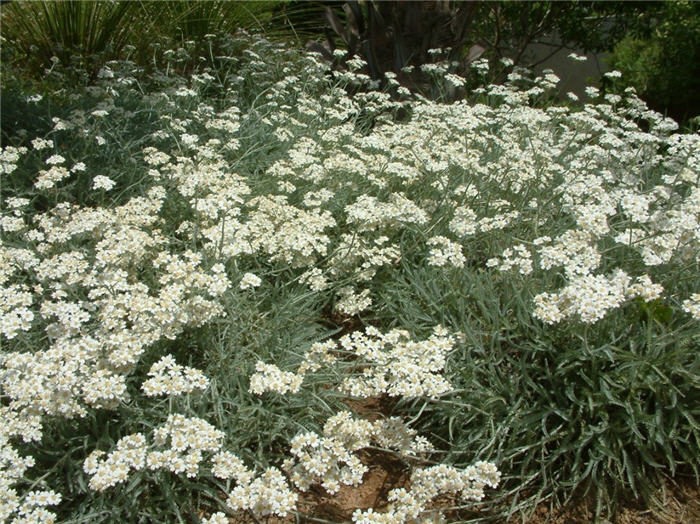| Botanical Name: Achillea x kellereri | |
| Common Name: Keller's Yarrow |

-
Anatomy
-
Culture
-
Design
Plant Type
Ground cover, Perennial
Height Range
1-3'
Flower Color
White
Flower Season
Summer, Fall
Leaf Color
Grey Green, White
Bark Color
n/a
Fruit Color
n/a
Fruit Season
n/a
Sun
Full
Water
Low, Extra in Summer
Growth Rate
Moderate
Soil Type
Sandy, Clay, Loam
Soil Condition
Average, Poor, Well-drained
Soil pH
Neutral, Basic
Adverse Factors
n/a
Design Styles
English Cottage, Meadow, Mediterranean, Ranch, Seascape, Spanish
Accenting Features
Showy Flowers
Seasonal Interest
Spring, Summer
Location Uses
Entry, Perennial Border, Foundation, Parking Strip, Walkways, With Rocks
Special Uses
Cut Flowers, Fire Resistant, Small Spaces
Attracts Wildlife
Butterflies
Information by: Stephanie Duer
Photographer:
Photographer:
-
Description
-
Notes
This hybrid yarrow is notable for its vigorous growth and the profusion of large white flower clusters that continue throughout the summer. The unusual silvery strap-like leaves add interest when the plant is out of bloom. Plant in the middle of a ground cover like Veronica, or in front of xeric blue flowers like Nepeta and May Night Salvia. Grows about 8 inches tall and 15 inches wide.
The yarrow propagate easily from rooted cuttings or division, which should be performed in the early spring or fall. Following bloom, one should dead head the plant and divide the clumps when it appears crowded.
Plant in full sun and average to poor, well-drained soils. Deadhead if the look of the spent flowers isn't to your liking, otherwise, leave them be. Deer and rabbit resistant.